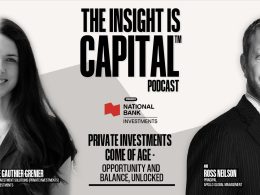by Jurrien Timmer, Director of Global Macro, Fidelity Investments
Strong economic news has dashed hopes of rate cuts.
Key takeaways
- Strong economic news and hotter-than-expected inflation reports in recent weeks have dashed the market's hopes of the Fed cutting rates anytime soon.
- We may have entered a new phase of the bear market that started in 2022, with liquidity tightening and earnings contracting.
- While that may sound negative for stocks, it's important to remember that a lot of pain was already priced in with the market's declines last year.
- It's still possible that we won't see any new market lows for this cycle, even if the foundation for a new bull market isn't in place yet.
The market narrative has changed again in recent weeks, potentially ushering in a new phase to the bear market that started over a year ago.
In my view, we've already seen a few distinct phases to this market cycle. During the first phase of the bear market, from January 2022 to October 2022, liquidity conditions tightened substantially while earnings held up. The market declined 28% over this period, largely driven by contracting price-earnings ratios (P/Es) as the market reacted to the Fed's anticipated rate hikes.
Next we saw a brief recovery phase, which started last October as the market lifted off its lows. Earnings started to decline modestly, but the stronger driving force was that the market began anticipating an eventual Fed pivot to cutting rates. This optimistic anticipation of a Fed pivot drove a recovery bounce, from October through early February, that let the market recapture nearly half of its decline.
When good news is bad news
But we now seem to be in a third phase, with the shift triggered by the economic news of recent weeks. It started with the jobs report a few weeks ago—with payrolls increasing much more than expected, and unemployment falling to multi-decade lows. That was followed by the latest retail sales report, which showed consumers have been spending more than expected even in the face of inflationary pressures.
The problem with all this seemingly good economic news is that it throws cold water on the prospect of the Fed pivoting anytime soon. The flurry of hotter-than-expected inflation measures that came out in the past few weeks—including the Consumer Price Index, Producer Price Index, and Personal Consumption Expenditure Price Index—further dashed any hopes of rate cuts anytime soon.
Instead, the market is now bracing for the prospect that the Fed could raise rates even higher than previously anticipated. Talk is emerging of a 6% terminal rate (meaning, the peak or ending rate for this rate-hike cycle), as the Fed attempts to slay the inflation dragon, even if it means a rougher landing. In fact, if we count the effects of quantitative tightening (the oppositive of quantitative easing, with the Fed shrinking its balance sheet), which is estimated to be worth an additional 1 percentage point of rate hikes, we may already be looking at the equivalent of 6%.
At the same time as the market is adjusting its expectations for the Fed, we're seeing that earnings have unmistakably inflected and are now coming down. Based on how earning estimates have been progressing, 2023 is increasingly looking like it could be a ‒10% earnings year.
So I see this third phase of the bear market as characterized by contracting earnings and tightening liquidity conditions.
Outlook for stocks
It's hard to imagine stocks doing well against that backdrop. The main question for this next market phase is whether last year's decline in valuations (with P/Es coming down by about 50%) was enough to discount this year's earnings contraction.
Past performance is never a guarantee of future results. But when I looked at historical bear market analogs—including the 2008 global financial crisis, the 2000–2002 bursting of the tech bubble, and the bear market cycles of 1973–1974 and 1946–1949—it supported my view that a lot of bad news was already priced in last year.
Financial conditions for this market cycle have already tightened as much, or more, as any of the analogous bear markets, with the exception of the Great Recession in 2008. While it's entirely possible that liquidity conditions will seize up again, these comparisons have suggested to me that a lot of the pain was indeed front-loaded in 2022.
This all supports the notion that the October lows may have been the lows for this bear market. We may have already seen the bottom, even if we don't yet have the conditions for the next bull market.
A trendless market
This outlook is also consistent with my view that 2023 may be a year of stock market limbo.
Indeed, the cycle seems to be meandering without a clear inflection. The chart below shows this from a technical standpoint. The blue line shows the S&P 500's trend relative to its 52-week moving average, in terms of numbers of standard deviations. We are at zero.
The sentiment picture also suggests a trendless market. Below we see that cash on the sidelines is at 11% of market capitalization, which is neither bullish nor bearish.
Likewise, fund flows are showing neither hope nor despair, with the 3-month sum of new flows into stock mutual funds and ETFs at roughly zero.
A period of ongoing base-building may lie ahead for the market. For investors, the key for now is patience.
Copyright © Fidelity Investments
About the expert

Jurrien Timmer is the director of global macro in Fidelity's Global Asset Allocation Division, specializing in global macro strategy and active asset allocation. He joined Fidelity in 1995 as a technical research analyst.














